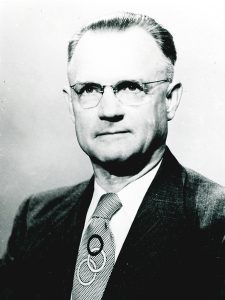Merlin G. Spangler

Substantial contributions in early technical developments in geotechnical engineering, and as an international authority and premier researcher on underground conduits and sewer systems
Inducted 2021
Merlin Spangler graduated from Iowa State College in 1919 with a bachelor’s degree in civil engineering and came back to get his master’s in civil engineering in 1928.
During World War I, Spangler was the first lieutenant the first artillery and became a captain in the field artillery for the reserves from 1925 to 1935. In World War II, he served in the Civil Engineering Corpsr the U.S. Naval Reserve. While in the Corps, he developed a buried flexible pipe design to fix issues between pipe and soil interaction. Spangler served two years in active duty as a Lieutenant Commander in the Navy Baron of Yards and Docks.
Spangler was a professor at Iowa State from 1945 to 1985. The Marston-Spangler theory became the basis of culvert design worldwide, and he and wrote textbooks on soil engineering that are still sold today. Spangler’s work in materials and soils served as a key to expansion of the highway system which is now the interstate highway system. He was known as prolific writer and a great engineer.
